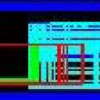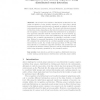143 search results - page 3 / 29 » Detecting group activities using rigidity of formation |
ICCV
2003
IEEE
14 years 7 months ago
2003
IEEE
Dynamic Probabilistic Networks (DPNs) are exploited for modelling the temporal relationships among a set of different object temporal events in the scene for a coherent and robust...
EUROSSC
2007
Springer
13 years 12 months ago
2007
Springer
We describe and evaluate a distributed architecture for the online recognition of user activity sequences. In a lower layer, simple heterogeneous atomic activities were recognised ...
SIGGRAPH
2000
ACM
13 years 10 months ago
2000
ACM
The traditional high-level algorithms for rigid body simulation work well for moderate numbers of bodies but scale poorly to systems of hundreds or more moving, interacting bodies...
EJWCN
2010
13 years 20 days ago
2010
We formulate the problem of distributed throughput-efficient sensing in cognitive radio (CR) networks as a dynamic coalition formation game based on a Markovian model. The propose...
VTC
2007
IEEE
14 years 2 days ago
2007
IEEE
Abstract—Group-orthogonal multicarrier code-division multiple access (GO-MC-CDMA) has been proposed as a multiplexing technique for the uplink segment of wireless systems. The di...


